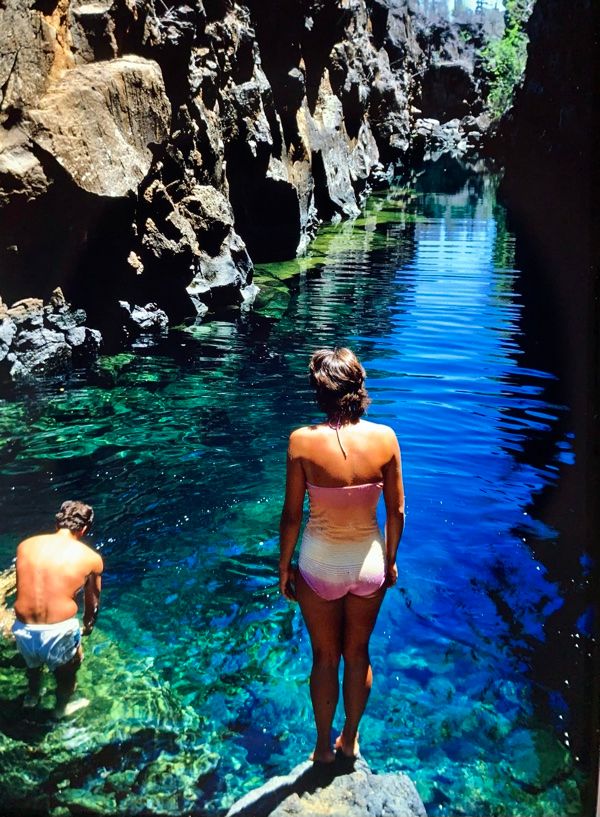#ThrowbackThursday: La Grieta

Fissures are curious things. They’re cracks that can form in islands of volcanic rock that bubble up from the sea. As a geographic feature, they’re often narrow, but deep. One such fissure in The Galapagos interestingly splits the town of Puerto Ayora on Ilsa Santa Cruz. It would be easy enough to bridge this gap, but those who live (mostly ex-pats) on the quiet, residential side known as El Outre Lado (the other side) resisted a bridge that would make it convenient for tourists staying on the east side in main part of town to invade. So the only way to cross the chasm was by boat or hike the long way around.
A more amazing fissure lies if you make the trip to El Outre Lado. Being inconvenient to stumble on for lazy tourists and hard find even if you know it’s there is La Grieta (The Crack). This fissure is maybe 40 at its widest and cut for a hundred feet or so north and south. It’s filled with brackish water: a combination of rain and the sea water seeping in. It may be the most amazing snorkeling spot on Earth.
For much of the day the still waters are dark with little light reflection off the black rock walls. But around midday when the blistering Equatorial sun cuts the darkness with a magical, wavering illumination. When I was there, the sun’s angle caressed one wall seemingly 100 feet down. I really couldn’t tell you the depth of the La Grieta, but it seems endless. To snorkel here, it’s more like floating through space than swimming. Like anti-gravity instead of buoyancy. All the while brackish-water fish (up to three feet long) are effortlessly gliding below you, their shapes moving in and out of the light in a parade that puts anything they could concoct with CGI to shame.
To the locals, La Grieta is just that old swimming hole with built-in reprieve from the brutal sun. To the determined tourist, it’s well worth the effort to find. The locals happily pointed the way for me. But then they probably figured I’d die of thirst on the jagged, barren and burning plain of lava rock that hides this place.
Read more #ThrowbackThursday stories.
